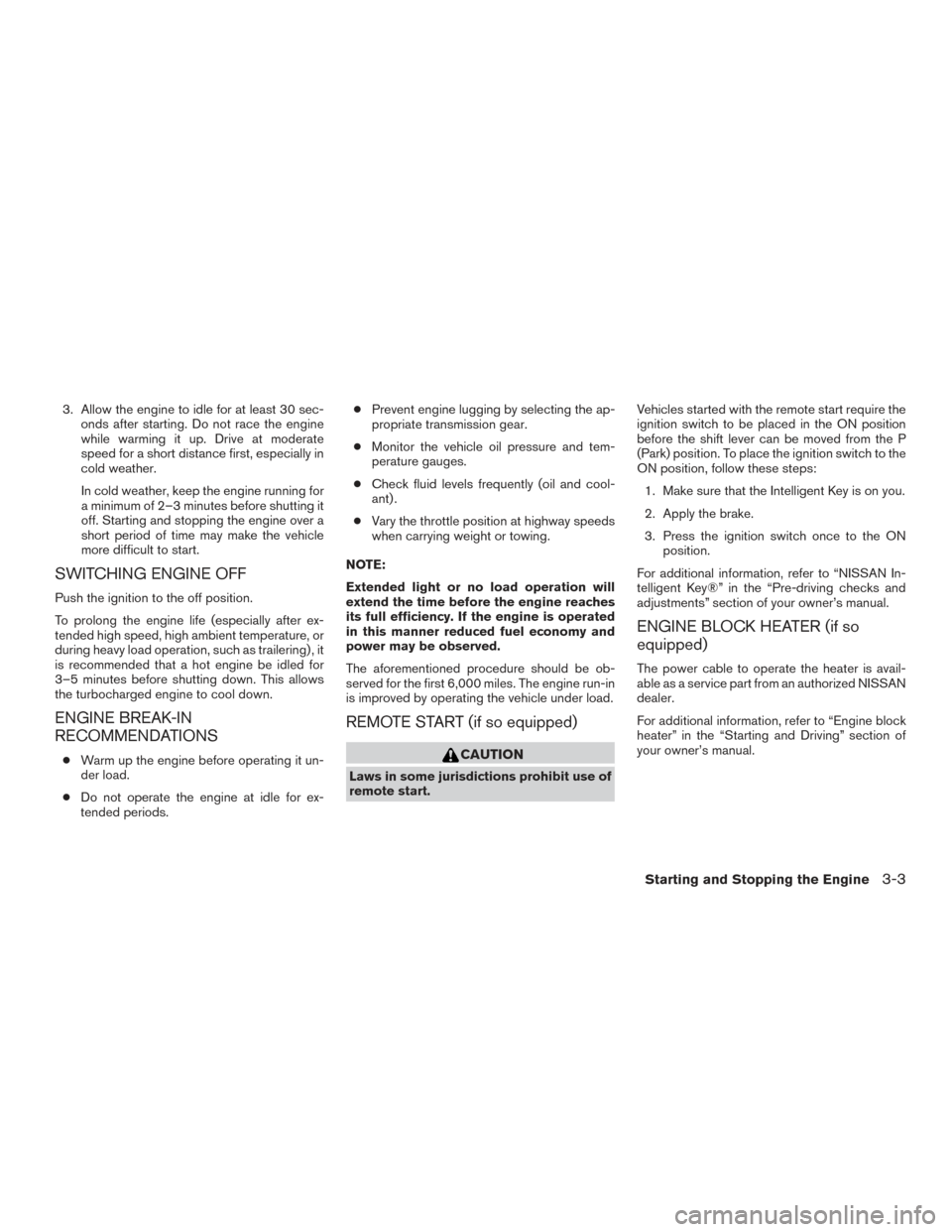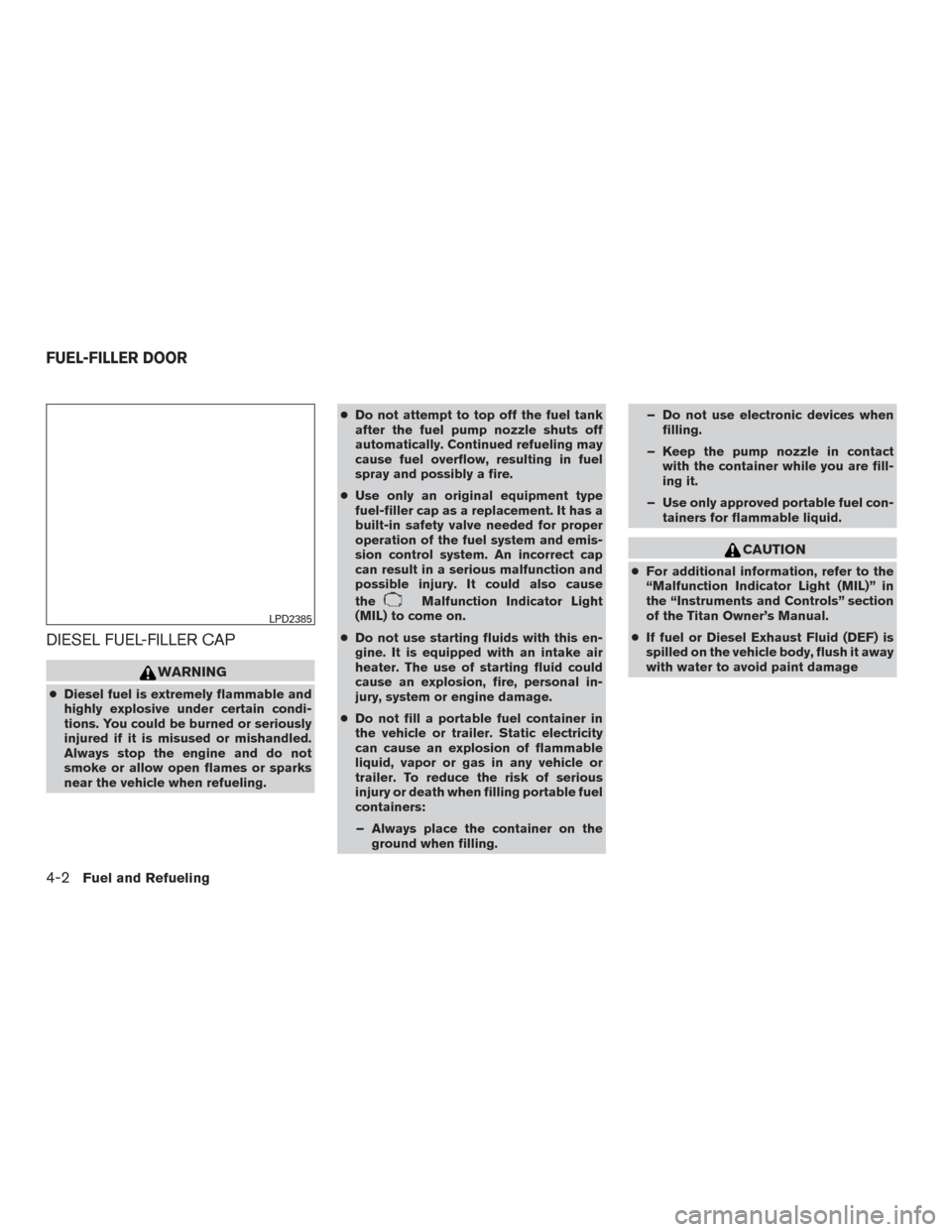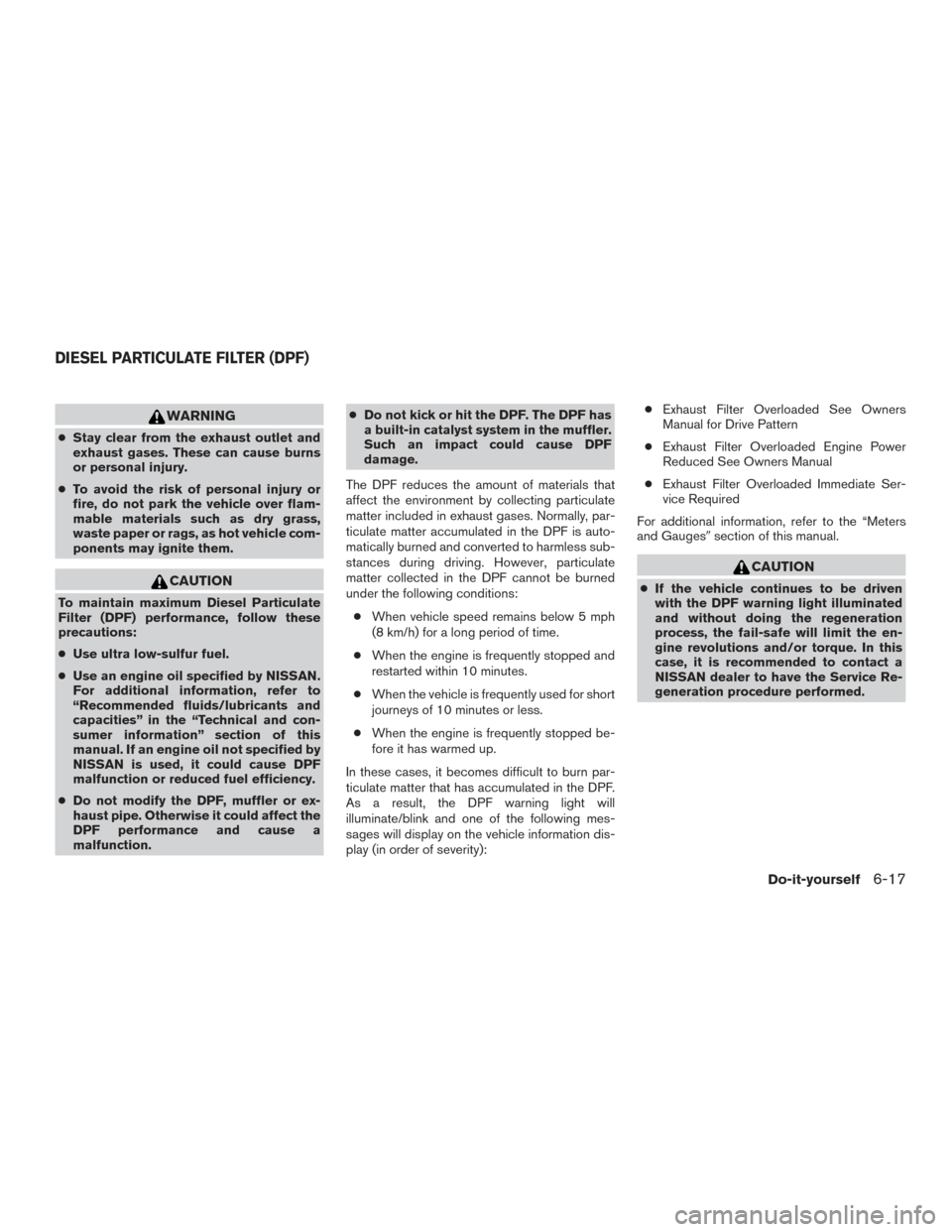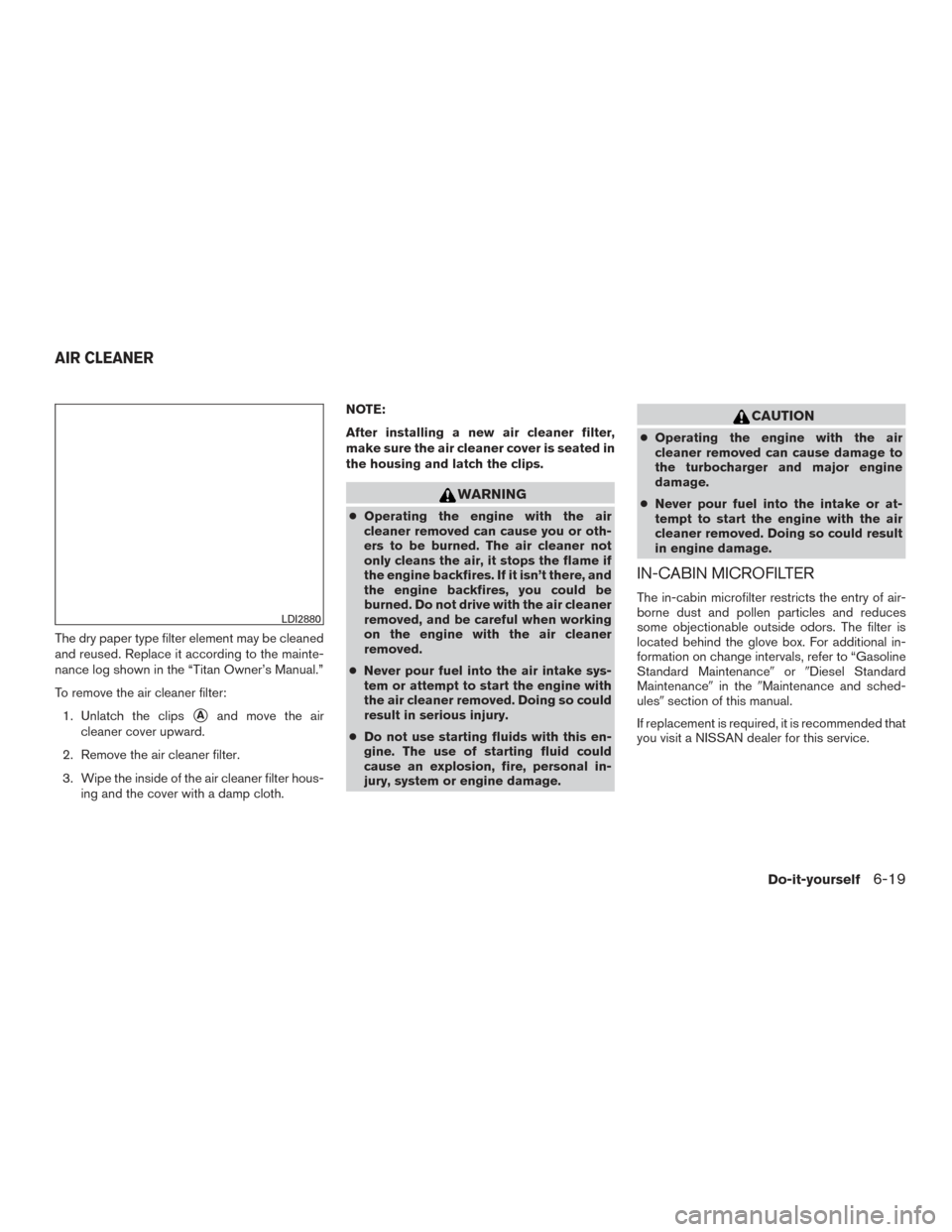Page 627 of 671

3. Allow the engine to idle for at least 30 sec-onds after starting. Do not race the engine
while warming it up. Drive at moderate
speed for a short distance first, especially in
cold weather.
In cold weather, keep the engine running for
a minimum of 2–3 minutes before shutting it
off. Starting and stopping the engine over a
short period of time may make the vehicle
more difficult to start.
SWITCHING ENGINE OFF
Push the ignition to the off position.
To prolong the engine life (especially after ex-
tended high speed, high ambient temperature, or
during heavy load operation, such as trailering) , it
is recommended that a hot engine be idled for
3–5 minutes before shutting down. This allows
the turbocharged engine to cool down.
ENGINE BREAK-IN
RECOMMENDATIONS
● Warm up the engine before operating it un-
der load.
● Do not operate the engine at idle for ex-
tended periods. ●
Prevent engine lugging by selecting the ap-
propriate transmission gear.
● Monitor the vehicle oil pressure and tem-
perature gauges.
● Check fluid levels frequently (oil and cool-
ant) .
● Vary the throttle position at highway speeds
when carrying weight or towing.
NOTE:
Extended light or no load operation will
extend the time before the engine reaches
its full efficiency. If the engine is operated
in this manner reduced fuel economy and
power may be observed.
The aforementioned procedure should be ob-
served for the first 6,000 miles. The engine run-in
is improved by operating the vehicle under load.
REMOTE START (if so equipped)
CAUTION
Laws in some jurisdictions prohibit use of
remote start. Vehicles started with the remote start require the
ignition switch to be placed in the ON position
before the shift lever can be moved from the P
(Park) position. To place the ignition switch to the
ON position, follow these steps:
1. Make sure that the Intelligent Key is on you.
2. Apply the brake.
3. Press the ignition switch once to the ON position.
For additional information, refer to “NISSAN In-
telligent Key®” in the “Pre-driving checks and
adjustments” section of your owner’s manual.
ENGINE BLOCK HEATER (if so
equipped)
The power cable to operate the heater is avail-
able as a service part from an authorized NISSAN
dealer.
For additional information, refer to “Engine block
heater” in the “Starting and Driving” section of
your owner’s manual.
Starting and Stopping the Engine3-3
Page 628 of 671
MEMO
3-4Starting and Stopping the Engine
Page 630 of 671

DIESEL FUEL-FILLER CAP
WARNING
●Diesel fuel is extremely flammable and
highly explosive under certain condi-
tions. You could be burned or seriously
injured if it is misused or mishandled.
Always stop the engine and do not
smoke or allow open flames or sparks
near the vehicle when refueling. ●
Do not attempt to top off the fuel tank
after the fuel pump nozzle shuts off
automatically. Continued refueling may
cause fuel overflow, resulting in fuel
spray and possibly a fire.
● Use only an original equipment type
fuel-filler cap as a replacement. It has a
built-in safety valve needed for proper
operation of the fuel system and emis-
sion control system. An incorrect cap
can result in a serious malfunction and
possible injury. It could also cause
the
Malfunction Indicator Light
(MIL) to come on.
● Do not use starting fluids with this en-
gine. It is equipped with an intake air
heater. The use of starting fluid could
cause an explosion, fire, personal in-
jury, system or engine damage.
● Do not fill a portable fuel container in
the vehicle or trailer. Static electricity
can cause an explosion of flammable
liquid, vapor or gas in any vehicle or
trailer. To reduce the risk of serious
injury or death when filling portable fuel
containers:
– Always place the container on the ground when filling. – Do not use electronic devices when
filling.
– Keep the pump nozzle in contact with the container while you are fill-
ing it.
– Use only approved portable fuel con- tainers for flammable liquid.
CAUTION
●For additional information, refer to the
“Malfunction Indicator Light (MIL)” in
the “Instruments and Controls” section
of the Titan Owner’s Manual.
● If fuel or Diesel Exhaust Fluid (DEF) is
spilled on the vehicle body, flush it away
with water to avoid paint damage
LPD2385
FUEL-FILLER DOOR
4-2Fuel and Refueling
Page 653 of 671

WARNING
●Stay clear from the exhaust outlet and
exhaust gases. These can cause burns
or personal injury.
● To avoid the risk of personal injury or
fire, do not park the vehicle over flam-
mable materials such as dry grass,
waste paper or rags, as hot vehicle com-
ponents may ignite them.
CAUTION
To maintain maximum Diesel Particulate
Filter (DPF) performance, follow these
precautions:
● Use ultra low-sulfur fuel.
● Use an engine oil specified by NISSAN.
For additional information, refer to
“Recommended fluids/lubricants and
capacities” in the “Technical and con-
sumer information” section of this
manual. If an engine oil not specified by
NISSAN is used, it could cause DPF
malfunction or reduced fuel efficiency.
● Do not modify the DPF, muffler or ex-
haust pipe. Otherwise it could affect the
DPF performance and cause a
malfunction. ●
Do not kick or hit the DPF. The DPF has
a built-in catalyst system in the muffler.
Such an impact could cause DPF
damage.
The DPF reduces the amount of materials that
affect the environment by collecting particulate
matter included in exhaust gases. Normally, par-
ticulate matter accumulated in the DPF is auto-
matically burned and converted to harmless sub-
stances during driving. However, particulate
matter collected in the DPF cannot be burned
under the following conditions: ● When vehicle speed remains below 5 mph
(8 km/h) for a long period of time.
● When the engine is frequently stopped and
restarted within 10 minutes.
● When the vehicle is frequently used for short
journeys of 10 minutes or less.
● When the engine is frequently stopped be-
fore it has warmed up.
In these cases, it becomes difficult to burn par-
ticulate matter that has accumulated in the DPF.
As a result, the DPF warning light will
illuminate/blink and one of the following mes-
sages will display on the vehicle information dis-
play (in order of severity): ●
Exhaust Filter Overloaded See Owners
Manual for Drive Pattern
● Exhaust Filter Overloaded Engine Power
Reduced See Owners Manual
● Exhaust Filter Overloaded Immediate Ser-
vice Required
For additional information, refer to the “Meters
and Gauges� section of this manual.
CAUTION
●If the vehicle continues to be driven
with the DPF warning light illuminated
and without doing the regeneration
process, the fail-safe will limit the en-
gine revolutions and/or torque. In this
case, it is recommended to contact a
NISSAN dealer to have the Service Re-
generation procedure performed.
DIESEL PARTICULATE FILTER (DPF)
Do-it-yourself6-17
Page 655 of 671

The dry paper type filter element may be cleaned
and reused. Replace it according to the mainte-
nance log shown in the “Titan Owner’s Manual.”
To remove the air cleaner filter:1. Unlatch the clips
�Aand move the air
cleaner cover upward.
2. Remove the air cleaner filter.
3. Wipe the inside of the air cleaner filter hous- ing and the cover with a damp cloth. NOTE:
After installing a new air cleaner filter,
make sure the air cleaner cover is seated in
the housing and latch the clips.
WARNING
●
Operating the engine with the air
cleaner removed can cause you or oth-
ers to be burned. The air cleaner not
only cleans the air, it stops the flame if
the engine backfires. If it isn’t there, and
the engine backfires, you could be
burned. Do not drive with the air cleaner
removed, and be careful when working
on the engine with the air cleaner
removed.
● Never pour fuel into the air intake sys-
tem or attempt to start the engine with
the air cleaner removed. Doing so could
result in serious injury.
● Do not use starting fluids with this en-
gine. The use of starting fluid could
cause an explosion, fire, personal in-
jury, system or engine damage.
CAUTION
● Operating the engine with the air
cleaner removed can cause damage to
the turbocharger and major engine
damage.
● Never pour fuel into the intake or at-
tempt to start the engine with the air
cleaner removed. Doing so could result
in engine damage.
IN-CABIN MICROFILTER
The in-cabin microfilter restricts the entry of air-
borne dust and pollen particles and reduces
some objectionable outside odors. The filter is
located behind the glove box. For additional in-
formation on change intervals, refer to “Gasoline
Standard Maintenance� or�Diesel Standard
Maintenance� in the�Maintenance and sched-
ules� section of this manual.
If replacement is required, it is recommended that
you visit a NISSAN dealer for this service.
LDI2880
AIR CLEANER
Do-it-yourself6-19